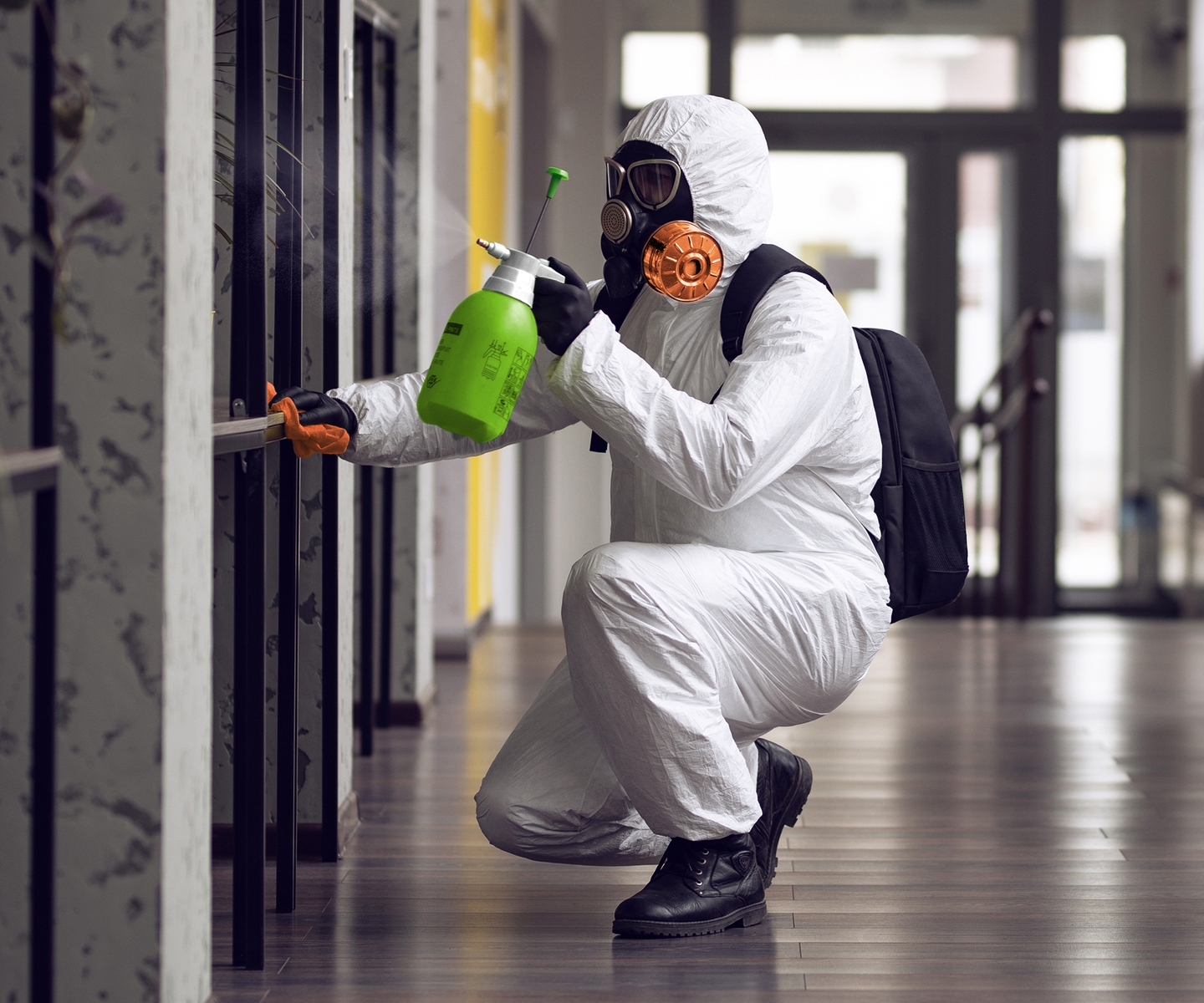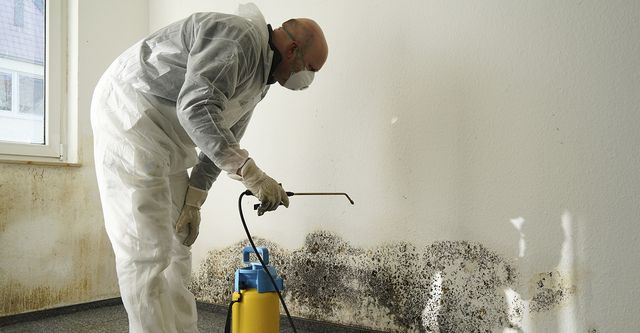Effective Mold Removal Approaches to Eradicate Mold And Mildew Contamination in Your Property
Mold and mildew contamination is a common problem that residential property proprietors encounter, frequently resulting in health problems and residential or commercial property damage if not resolved without delay and properly. The presence of mold can be an indication of underlying dampness troubles that need to be dealt with to avoid its recurrence (local mold remediation philadelphia). There are numerous methods available for mold removal, each with its own set of advantages and constraints. By recognizing the essential methods for removing mold, building proprietors can take positive steps to ensure a safe and healthy and balanced living setting.
Recognizing Mold And Mildew Resources

One primary technique for recognizing mold and mildew sources is carrying out an aesthetic analysis. This entails meticulously examining all locations of the property, including concealed rooms like behind wall surfaces and under floor covering. Moisture meters and thermal imaging cameras can also be utilized to find surprise water leakages or dampness pockets that can be advertising mold and mildew growth.
Additionally, air sampling can help pinpoint mold resources by finding raised mold and mildew spore degrees airborne. By recognizing and addressing the root reason of mold and mildew development, removal efforts can be much more targeted and eventually much more successful in eliminating the mold contamination.
Correct Air Flow Methods
Reliable mold and mildew remediation not just depends on identifying mold and mildew resources however likewise emphasizes the significance of executing correct air flow techniques to stop future mold and mildew growth (mold remediation philadelphia). Correct ventilation plays an essential duty in controlling interior humidity degrees, which in turn assists to discourage mold spores from thriving in moist settings. By guaranteeing excellent air circulation throughout the property, excess wetness can be lowered, therefore developing an environment less for mold growth
One reliable air flow technique is using exhaust followers in moisture-prone areas such as shower rooms, cooking areas, and laundry spaces. These followers help to eliminate damp air and stop it from accumulating on surfaces. Furthermore, opening up doors and windows when weather condition allows can also aid in enhancing air flow and lowering moisture levels inside your home.
It is very important to resolve any ventilation issues immediately to keep a healthy and balanced interior setting and prevent mold contamination. Regular maintenance of ventilation systems, such as cleaning up filters and ducts, is necessary to make certain optimum air movement and prevent the buildup of moisture that could lead to mold growth.
Effective Disinfecting and cleaning
To make certain detailed mold and mildew remediation, meticulous cleaning and disinfecting techniques have to be carefully applied. Mold and mildew spores can spread quickly if not properly cleaned and disinfected, leading to recurring mold and mildew development and prospective health and wellness risks. When taking on mold and mildew contamination, it is vital to start by removing any noticeable mold growth making use of proper cleaning options and strategies. Non-porous products can frequently be cleaned properly with industrial mold cleansers or a mix of water and detergent. Porous products may call for more extensive cleaning approaches or even substitute if the mold has actually deeply penetrated the surface area.
After the physical removal of mold and mildew, disinfecting the influenced areas is vital to kill pop over to these guys any type of remaining mold spores and avoid regrowth. Disinfectants such as bleach services or hydrogen peroxide can be utilized to sterilize the cleansed surface areas extensively. It is very important to adhere to maker directions and safety and security guidelines when using disinfectants to ensure efficiency and lessen wellness threats. Normal cleansing and decontaminating practices can help maintain a mold-free environment and safeguard the health of residents in the building.
Encapsulation and Sealing

Encapsulation and securing are vital methods in mold and mildew removal tasks to stop the reoccurrence of mold and mildew development. Encapsulation entails the application of a specialized sealant over surfaces impacted by mold. This sealant functions as a barrier, enveloping the mold visit site spores and avoiding them from coming to be air-borne and spreading to other areas. By encapsulating the mold, it properly seals the mold-infested surface areas, hindering further growth and decreasing the danger of exposure to damaging mold and mildew bits.
Securing, on the other hand, focuses on dealing with areas prone to moisture breach or where mold and mildew has previously developed. By sealing fractures, gaps, and gaps in wall surfaces, floorings, or ceilings, the entrance points for dampness and mold and mildew spores are reduced, creating an environment much less for mold development. This technique not only prevents the spread of mold and mildew however also aids in managing humidity degrees within the property, better preventing mold growth. When encapsulation and sealing are performed properly as part of a thorough mold and mildew remediation strategy, they considerably add to guaranteeing a mold-free and healthy and balanced indoor environment.
Surveillance and Avoidance
In maintaining a mold-free atmosphere post-encapsulation and securing, comprehensive surveillance and avoidance techniques play a critical role in making sure lasting effectiveness. Regular inspections are essential to find any signs of mold renewal or brand-new development promptly. These evaluations must incorporate not just previously affected areas but likewise other prone rooms vulnerable to moisture buildup.
Maintaining indoor humidity listed below 60% can dramatically impede mold and mildew development. Proper ventilation, including the use of exhaust fans in cooking areas and shower rooms, is likewise crucial in minimizing moisture and preventing mold and mildew advancement.
Additionally, educating residents on mold avoidance techniques, such as promptly fixing leakages, boosting air circulation, and resolving condensation concerns, is crucial. Motivating tidiness and prompt removal of any type of water-damaged materials can additionally deter mold and mildew infestations. By implementing a thorough tracking and avoidance plan, building owners can properly protect their rooms against mold and mildew contamination.
Verdict
To conclude, efficient mold and mildew remediation techniques are crucial in removing mold and mildew contamination in properties. By determining mold and mildew sources, executing correct ventilation methods, using reliable cleaning and sanitizing approaches, sealing and enveloping influenced areas, and continuously tracking and protecting against future mold and mildew growth, homeowner can efficiently eliminate mold issues. It is crucial to resolve mold and mildew contamination promptly to keep a healthy and balanced interior atmosphere and stop further damages.
Efficient mold and mildew remediation not only depends on identifying mold and mildew resources yet also emphasizes the value of carrying out appropriate ventilation methods to stop future mold development. When dealing with mold and mildew contamination, it is critical to begin by eliminating any visible mold development making use of suitable cleaning solutions and methods.Encapsulation and securing are important strategies in mold and mildew remediation tasks to protect against the reappearance of mold growth. By securing off fractures, crevices, and gaps in wall surfaces, floorings, or ceilings, the access factors for dampness and mold and mildew spores are reduced, creating an environment much less favorable to mold and mildew growth. By identifying mold and see this mildew resources, executing proper air flow methods, using effective cleansing and sanitizing methods, encapsulating and securing influenced areas, and continually surveillance and stopping future mold development, residential or commercial property proprietors can effectively eliminate mold and mildew problems.